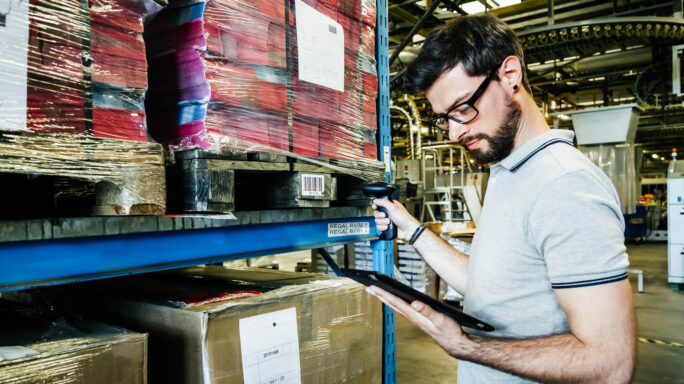Trends & Insights
9 trends that will shape your business due to coronavirus

As your business emerges from lockdown, you’ll be moving from reactive – solving the immediate challenges of the coronavirus (COVID-19) pandemic – to proactive: creating a new long-term vision for your company and capitalising on changes in your marketplace.
Costs have been cut, efficiencies have been made, and now is the time to look to a new future.
Here, we look at some of the trends that are likely to affect your business.
1. Supply chains may have to change, if they haven’t already
Companies now realise that single supply chains, while economical, are most at risk of disruption.
They are moving to supply networks: multiple suppliers which may be slightly more costly to maintain, but which also spread and therefore mitigate risk.
With a new political landscape, there’s also a drive towards onshoring and pride in ‘built at home’.
2. Labour will focus on high-value work
Business Process Automation (BPA) has been a trend for a couple of years now.
BPA uses robotics, artificial intelligence (AI) and even old-style macros to allow jobs which are repeatable (and in many cases rather boring) to be done automatically, freeing up labour to do more useful, strategic and meaningful activities.
As businesses look to cut costs, it makes more sense than ever to automate where possible.
3. Using data effectively will keep businesses agile
In these times of change, agility is a more prized asset than predictability. Being able to respond to market complexity (and indeed competitors who are equally hungry) is key to success.
And nothing enables agility better than data.
Understanding complex supply chains in real-time, keeping expensive staff focused on high-value work and optimising operations all need data to feed decisions.
To do this effectively, you’ll have to think about the following points:
- Take every opportunity to extract new data from operations (the Internet of Things, for example, is becoming highly affordable – there are now ways to gain ever more granular knowledge from across a manufacturing operation at low cost).
- The value of data reduces exponentially over time. Prioritise real-time sources over retrospective analysis for maximum efficiency.
- Connecting disparate systems can turn raw data into actionable knowledge. Use enterprise resource planning (ERP) software to extract information from legacy systems and present it to different stakeholders in your organisation in meaningful and actionable ways.
4. Teams will need more access to data
Focus above all on keeping people connected.
When coronavirus emerged, the priority was videoconferencing. Using tools such as Microsoft Teams to allow business to continue uninterrupted where possible while employees are operating at a distance.
For a more forward-looking time horizon, the priority now becomes giving your teams access to information as well as each other:
- Make data accessible to remote workers. Live information from your ERP software will need to be distributed to home-workers, either through remote access desktops or direct logins.
- Establish policy-driven data management regimes. As the workforce expands, covering on-site employees, home-workers, freelancers, temporary staff, and so on information security will become a crucial priority. Remote workers are particularly at risk of hacking and phishing attacks, especially if they are using their own equipment. Create new policies for these different groups and give them the help they need to remain compliant.
5. Workplaces will be optimised
From retailers to production lines, social distancing has meant reconfiguration and refactoring. And smart businesses bearing this upheaval are also taking the opportunity to optimise every aspect of their operations.
They can use time and motion studies to simplify and pull cost out of every repeatable activity, whether from employees or customers.
6. Office plans and factory lines will be reworked
Over the past few months, we’ve dealt with the race to work from home where possible. And we know offices and production lines won’t offer quite the same experience as we’ve been used to.
Our interactions in the workplace will now be subject to social distancing.
Desks in offices will be larger or separated into cubicles (reversing the trend of the past few years towards open-plan workspaces), while factories will need to rework how people interact on lines.
7. Working from home will require more structure
We’ve coped with home-working as an emergency measure. Now it has to be formalised for those who either choose it, or for businesses where it makes most economic sense.
Home workers often feel removed from strategy. They miss the connection of the ‘water-cooler’ moment, or even feel left out of decisions; and therefore wellbeing may be challenging.
Access to information is a priority, too. All of these need significant effort.
Managers must also account for home-workers’ different circumstances. Working for a low wage from a small home with three children and no privacy is very different to a highly paid professional couple with no children in a large and well-equipped home.
8. Work patterns could change
Many manufacturers might move to shift work, increasing active hours to compensate for socially distanced working.
9. Gig economy, consultancy and portfolio labour demand may increase
When we fully acclimatise to working with people who aren’t in one place, it’ll become natural to pull in labour from anywhere appropriate, on demand, to meet strategic needs.
Digital platforms will become important as the labour market becomes infinitely flexible, not just for blue-collar or repetitive work, but also for strategy.
If you only need a finance executive for two days per month, you’ll be able to find one – possibly even someone in a different country.
Final thoughts
Depending on your business, you may find a handful of these trends will apply. Perhaps all will be applicable.
As you shape your strategy for the next 12 months, it’s worth considering these trends and applying them where necessary to ensure the smooth running of your business.





